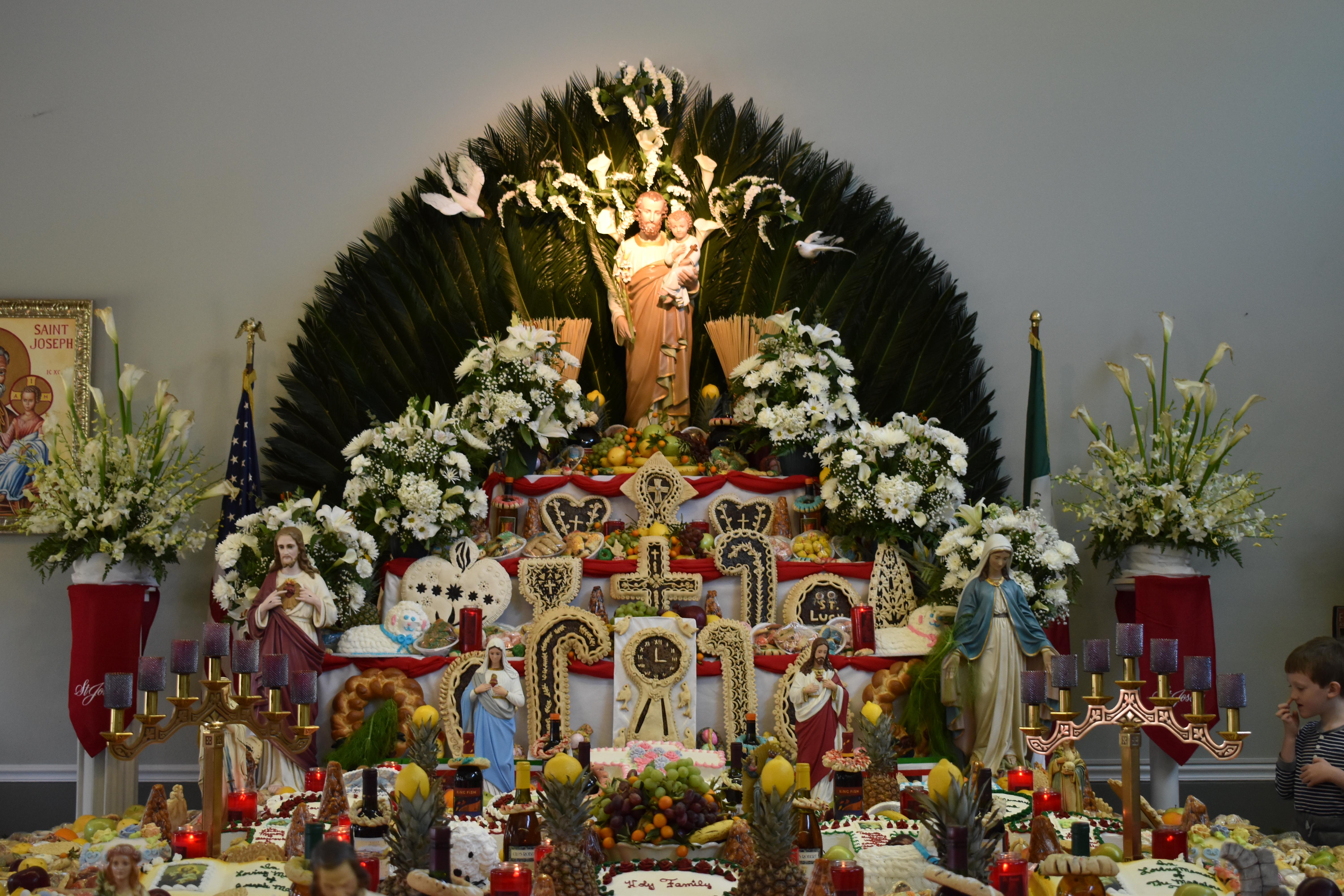
Photo by Laura Guccione
March 19 marks St. Joseph's Day, also known as the Feast of Saint Joseph, who is revered as the father of Jesus and the patron saint of Sicily. Legend states that Saint Joseph brought Sicily relief from famine during the Middle Ages. Faced with severe drought, the people prayed to the island's patron saint to deliver rain, promising to prepare a feast in gratitude. Rain came, the population was saved, and the people celebrated with a banquet in Joseph's name. And so began the annual tradition of preparing St. Joseph's Day altars filled with food, ranging from humble fava beans to festively decorated cuccidati cookies.
The custom was carried with Sicilian immigrants to the United States in the late 19th and early 20th centuries, particularly among those who settled in Louisiana. Today, St. Joseph's Day is a major holiday, especially in New Orleans, where lavishly decorated altars appear at churches, schools, and even atop parade floats. And food is distributed to charity.
To learn more about the history and evolution of the St. Joseph altar tradition, I reached out to native New Orleanian and historian Laura Guccione, who has written a forthcoming book on the topic and is actively involved in preserving and promoting the tradition through lectures, events, and community engagement.
How did the tradition of Saint Joseph's Day altars originate in Sicily?
The main story is that there was a famine and that the people of Sicily prayed to St. Joseph. And then all of a sudden, the fava bean started growing, and they ate the fava bean, which originally was fodder for animals. It saved them, and they decided to have a feast to celebrate that the famine was over.
How was the tradition brought to New Orleans?
After the Civil War, people from Louisiana were trying to replace the enslaved to work on the sugarcane plantations. Sicily has a tradition of growing, but it was amid famine. After the unification of Italy, Sicily was poorer than they were before. So it was perfect timing for them to come.
A small Sicilian population was already in New Orleans before the Civil War. It's where the lemon trade started; from there, it grew.
So there are already these connections, and they started bringing people, and then the population grew and grew.
A lot of them were migrant workers. They settled all over Louisiana. It was mostly men. Eventually, some of them settled and stayed, and then they would have their wives come over and have children.
Early on, other saints' days were celebrated here, but those kind of fizzled out. After the two world wars, St. Joseph's Day really took off because people were building altars so their sons would come home safe and sound.
How has the celebration evolved?
You see a lot more of the altars and in different places. After Katrina, there were a lot of people moving here, and it really put people in a panic about what was going to happen and whether we would lose certain cultural traditions and rituals. But now it seems like there are a lot more of them, and it's not always Sicilians building them, erecting the altars.
While Sicilians celebrate St. Joseph's Day as the feast day of the saint, the Black Masking Indians celebrate St. Joseph's Day as mid-Lent. Traditionally, the Black Masking Indians wore costumes on Mardi Gras Day and St. Joseph's Day, but around the 1980s, Super Sunday became a thing on the Sunday closest to St. Joseph's Day.
How can somebody who isn't in New Orleans set up their own altar and celebrate?
Traditionally, it is three layers. What I do is take some wine boxes, cover them with tablecloths, and then build it up. At the very top, there's a statue of St. Joseph, usually surrounded by St. Joseph lilies, which bloom closest to his feast day. You can just decorate with any kind of fruit, vegetables, or cookies and just go to town with that.
What is your hope people will take away from this celebration?
Just how important it is to continue traditions. And it's all about pride in your heritage along with the Sicilian traditions that have survived.
Photo by Laura Guccione
If you enjoyed this article, consider subscribing to my newsletter for more content and updates!

